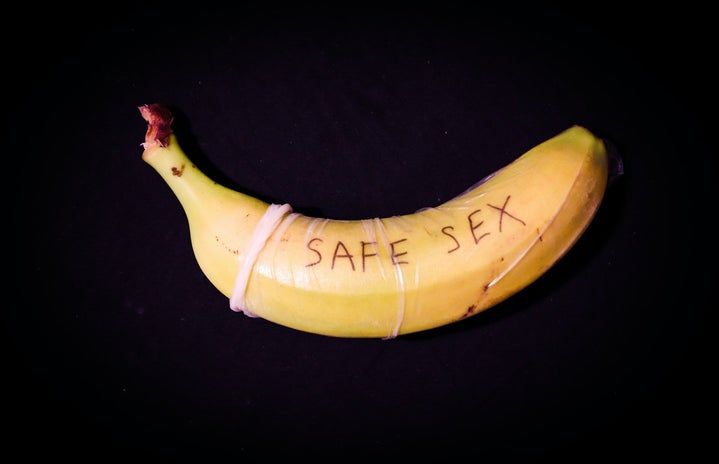There is about a 34% chance that you were taught some form of sex education in schools. Based on that statistic, many young people were left wondering where the gym teacher who doubled as a sex education teacher was, like you see in high school movies. Without the sex education that is needed in schools, kids are now going to social media and the internet to learn about sexual health. This can lead to dangerous notions surrounding the topic, such as sexually transmitted diseases and consent. Sex education in schools has a long history dating back to the 1900s and has gone under many regulations and restrictions since then to get to where we are now in 2023.
According to the National Sex Ed Conference, the idea of sex education started in 1918 when the Chamberlain-Kahn Act mandated education on syphilis and gonorrhea for soldiers. In 1919, the U.S. Department of Labor’s Children’s Bureau released a report suggesting that “sex education during school could have better-protected soldiers from STIs.” This ultimately led to sex education being introduced in high schools in the 1920s and the U.S. Office of Education first publishing sex education materials and training for teachers in the 1930s. Sex education later expanded into colleges in the 1930s through the 1940s and it wasn’t until 1964 that the Sexuality Information and Education Council of the U.S. (SIECUS) was founded. This prompted sex education to become a political issue in the 1960s and ‘70s that would then have parents protesting it in schools for years to come. By 2011, 90% of parents in the U.S. supported sex education, which led to 22 states and the District of Columbia to mandate sex education and 11 to mandate HIV education. However, many mandated exceptions and regulations have come into play in later years.
Sex education in schools was made for young people to understand more about their sexuality and their bodies, but also to keep them healthy and safe. Without this education, youth are left to make their assumptions and to look for information elsewhere that isn’t monitored and administered by health officials and experts. In “The Importance of Access to Comprehensive Sex Education,” the benefits of adolescents having access to “developmentally appropriate, evidence-based education” include them being able to “develop a safe and positive view of sexuality, build healthy relationships, and make informed, safe, positive choices about their sexuality and sexual health.” Although studies and specialists can agree that schools having sex education is important and benefits young people, statistics show that states don’t agree. According to the Guttmacher Institute, as of August 2023, “38 states and the District of Columbia mandate sex education and/or HIV education; 17 states require program content to be medically accurate; 20 states and DC require that information be provided on contraception; 39 states and DC require that information be provided on abstinence (29 states require that abstinence be stressed and 10 states and DC require that abstinence be covered).” Many sexuality educators are pushing for states to rethink including abstinence-only messages in schools, especially since the overturning of Roe v. Wade that prohibits many young people from having access to abortion or medical help. According to the New York Times, 46% of pregnancies in the U.S. are unintended and many look to the lack of sex education in schools as the problem. Not all people have the same sexuality, so the sex education they may or may not receive may or may not be helpful or useful to them. According to an article from NPR, young people in the LGBTQ+ community may feel left out of discussion in sex education classes when their school has them because “only ten states have policies that include affirming instruction on LGBTQ sexual health or identity,” while six states “require instruction that discriminates against LGBTQ individuals.” Out of the 50 states in the United States, “there are only five states that specifically mandate comprehensive sex education, which ‘affirms and is inclusive of sexual orientation, gender identity, and expression.’” While queer people were frantically scouring the internet for information about their sexual identity and health, there were “legislators in more than a dozen states that proposed bills that ‘seek to prohibit schools from using a curriculum or discussing topics of gender identity or sexual orientation’” in April 2022. The consequences of the lack of education provided to the LGBTQ+ community in schools are not in any way lesser than straight people, with “lesbian and bisexual youth or those with both male and female partners experience a higher rate of unintended pregnancies when compared to their heterosexual peers.” States and legislators need to stop acting as though the consequences put on queer people are less serious.
Although 38 states and the District of Columbia mandate sex education and/or HIV education, only 17 states are getting medically accurate program content. With the mandated abstinence push and the exclusion of the LGBTQ+ community, sex education in America is behind and does not seem to be in talks of changing. In my opinion, if American legislators want to decrease the percentages of abortions, unplanned pregnancies, and deaths due to sexually transmitted diseases, providing education from the beginning and getting ahead of the curve should be where they start.


